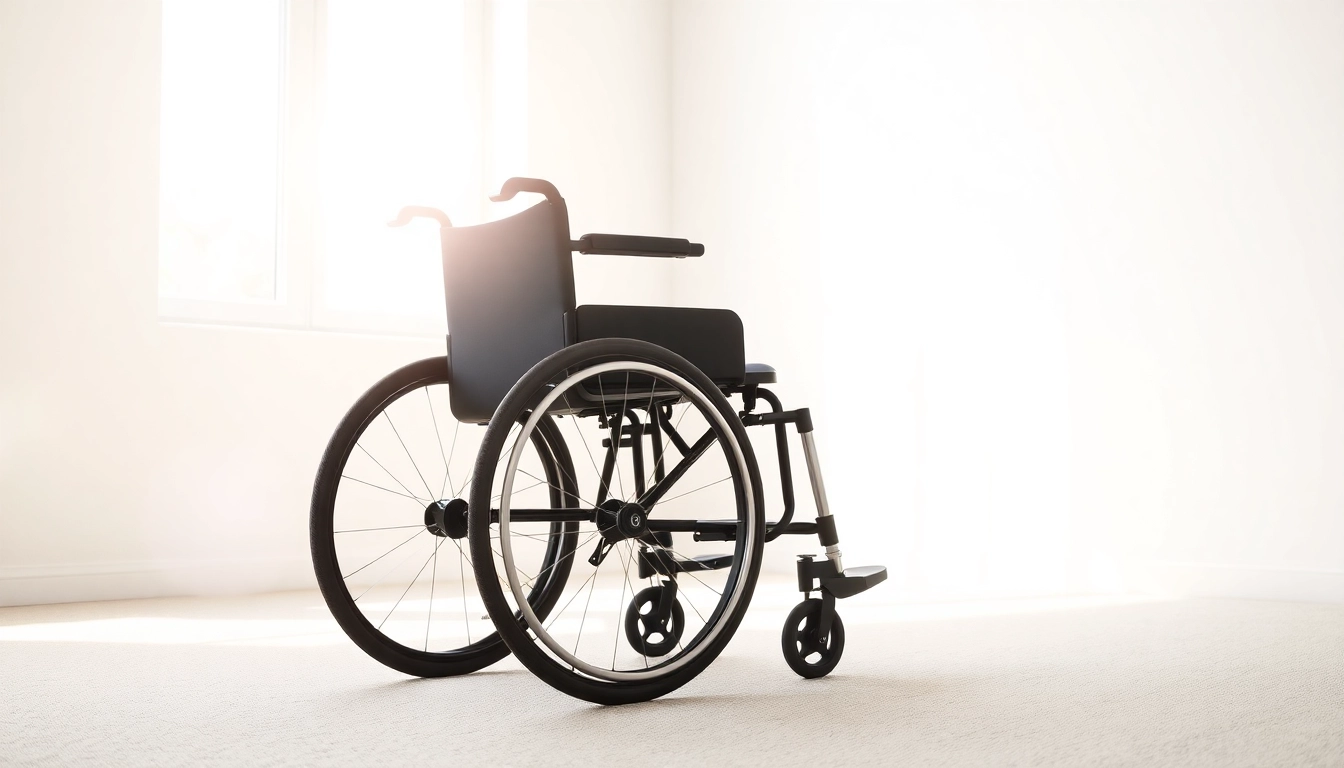
1. Understanding Manual Wheelchairs
1.1 What is a Manual Wheelchair?
A manual wheelchair is a mobility device designed to provide individuals with limited mobility the ability to move from one place to another independently or with assistance. Unlike electric wheelchairs, manual wheelchairs are propelled by the user or an attendant using a set of large wheels. They play a critical role in enhancing the quality of life for individuals with mobility challenges, allowing them to engage more fully in daily activities, social gatherings, and community events. This versatile tool has several variations to accommodate various needs, preferences, and lifestyles. For those looking to explore options, particularly in the realm of manual wheelchairs, understanding their core attributes and functionalities is essential.
1.2 Key Features of Manual Wheelchairs
When considering a manual wheelchair, it’s important to recognize the various key features that enhance practicality, comfort, and mobility:
- Frame Material: Manual wheelchairs are typically constructed from materials like steel or aluminum. Aluminum frames, while lightweight, make the wheelchair easier to maneuver.
- Weight Capacity: Each manual wheelchair has a specific weight limit that determines its durability and size.
- Seat Width and Depth: The dimensions of the seat vary, offering a fit that considers the user’s comfort and physical needs.
- Wheel Types: The size and type of wheels — standard or lightweight — significantly impact ride quality and maneuverability.
- Adjustability: Many models offer adjustable components like armrests and footrests, allowing for personal customization.
- Braking System: An effective braking mechanism ensures safety and stability, especially on inclines.
1.3 Types of Manual Wheelchairs Available
Manual wheelchairs come in several configurations, each tailored to meet specific user requirements. Here are some of the primary types:
- Standard Wheelchairs: Basic models designed for general use, suitable for those who need occasional mobility support.
- Lightweight Wheelchairs: Constructed from lighter materials, these wheelchairs are easier to transport and maneuver.
- Sports Wheelchairs: Designed for athletic performance, these feature a specialized build ideal for activities like basketball or tennis.
- Pediatric Wheelchairs: Sized for children, these provide the same level of support and comfort as adult models.
- Custom Wheelchairs: Tailored to the unique needs of an individual, often involving custom measurements and specialist input.
2. Choosing the Right Manual Wheelchair
2.1 Assessing Your Mobility Needs
Understanding your specific mobility needs is the first step in selecting the appropriate manual wheelchair. Consider factors such as:
- Frequency of Use: Will the wheelchair be used daily, occasionally, or solely for specific activities?
- Physical Condition: Assess strength levels; for instance, will the user be able to self-propel or will they need assistance?
- Environment: Determine the common terrain where the wheelchair will be used – is it mainly indoor, outdoor, or varied terrains?
2.2 Factors to Consider When Buying
When selecting a manual wheelchair, several critical considerations come into play:
- Budget: Weigh the cost against the necessary features that meet your needs. Price can vary significantly based on design and materials.
- Weight and Portability: If mobility involves transporting the wheelchair frequently, consider lighter models or those that can be folded.
- Comfort: Look for padded seating and backrest options that provide adequate support during prolonged use.
- Durability: Ensure the wheelchair is crafted from materials that withstand wear and tear, especially if used daily.
2.3 Comparing Different Brands and Models
Research various manufacturers known for their reliable wheelchairs. Each brand may have unique selling points, such as:
- Warranty and Service: Investigate the warranty provided and the availability of after-sale services.
- User Reviews: Look up testimonials and ratings to gauge the real-world performance of specific models.
- Reputation: Assess the brand’s reputation within the mobility aid community, which can offer insights into quality and customer satisfaction.
3. Maintenance and Care for Manual Wheelchairs
3.1 Routine Maintenance Tips
Regular maintenance is crucial for ensuring the long-term functionality of your manual wheelchair. Here are some best practices:
- Inspect Regularly: Check for any loose parts, damages, or unnecessary wear.
- Clean Wheels: Clean the wheels to prevent dirt buildup that could impede movement.
- Lubricate Moving Parts: Apply appropriate lubricant to the wheel axles and footrests to ensure smooth operation.
- Check Tire Pressure: If the wheelchair is equipped with pneumatic tires, ensure they are adequately inflated.
3.2 Troubleshooting Common Issues
Even with regular maintenance, certain issues may arise. Here are some common problems and their solutions:
- Unresponsive Handrims: This may indicate dirt or damage—clean or replace as necessary.
- Flat Tires: Check for punctures and consider repair or replacement as needed.
- Wobbling or Loose Wheel: Tighten the axle nuts carefully to secure the wheel in place.
3.3 When to Seek Professional Help
If issues persist after troubleshooting, it is essential to consult with a professional. Look for signs such as:
- Difficulty in propelling the wheelchair.
- Noticeable changes in the wheelchair’s performance.
- Physical discomfort when using the wheelchair, implying it may need adjustments.
4. Enhancing Comfort and Usability
4.1 Accessories for Your Manual Wheelchair
Enhancing comfort and usability can be achieved with the right accessories:
- Cushions and Cushioned Covers: Providing extra padding can reduce pressure on the user’s body.
- Storage Options: Consider pouches or bags that attach to the wheelchair for carrying personal items.
- Wheelchair Covers: To protect from weather elements when the wheelchair is outside.
4.2 Adjusting for Optimal Fit
It’s essential that a manual wheelchair fits the user well to improve comfort and performance. Here are key adjustments to consider:
- Seat Position: Adjust the seat height for ease of transfers and comfort.
- Footrest Height: Ensure the footrests are set at a level where the user’s feet are well supported.
- Backrest Tilt: Adjust the backrest for appropriate support, allowing for relaxation without slouching.
4.3 Techniques for Smooth Maneuverability
Maneuverability is key when using a manual wheelchair. Here are techniques that can help:
- Proper Hand Positioning: Keep hands flat against the handrims to achieve better propulsion.
- Use Your Body Weight: Lean slightly forward when pushing uphill and lean back when descending.
- Practice Turning: Make small adjustments by using your arms and weight to pivot efficiently.
5. Real-Life Experiences with Manual Wheelchairs
5.1 Testimonials from Manual Wheelchair Users
Listening to the experiences of others can provide valuable insights. Users often share stories of how a manual wheelchair has transformed their lives, offering not only mobility but also restoring independence. A common theme is how sighting opportunities for exploring new environments fosters a sense of empowerment.
5.2 Success Stories of Improved Mobility
Numerous success stories illustrate the positive impact of switching to a manual wheelchair. For example, certain individuals have reported how participating in community sports or attending social events became easier and more enjoyable once they found the right wheelchair. Real-life integration into social circles can significantly enhance overall mental health and well-being.
5.3 Joining the Community: Support and Resources
Becoming part of a community can provide emotional support and resources for individuals using manual wheelchairs. Online forums, local support groups, and community resources offer advice, share experiences, and provide personal recommendations for products or services. It can also pave the way for friendships built on shared experiences, thus enhancing social well-being.







